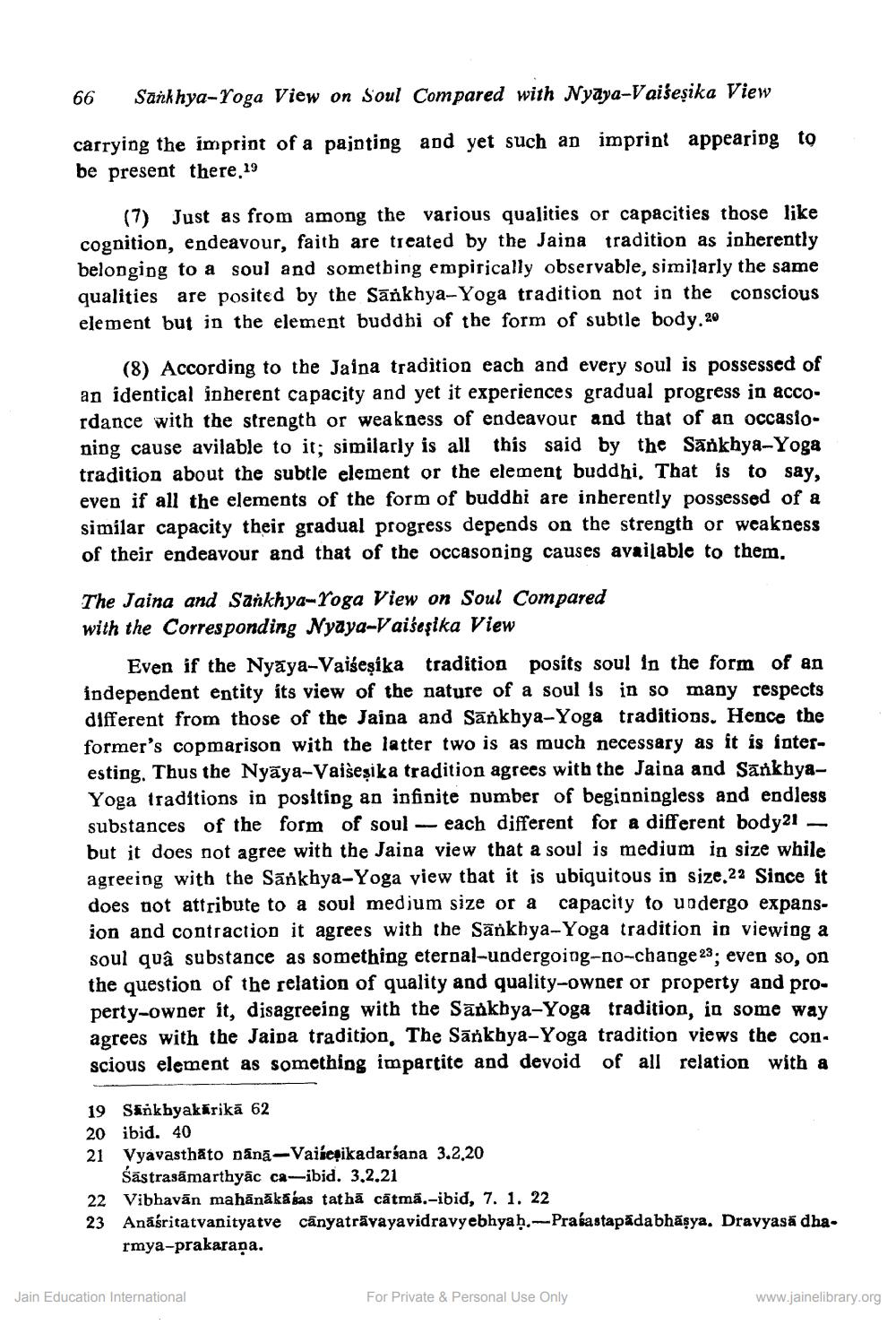________________
66
Sankhya-Yoga View on Soul Compared with Nyaya-Vaiseșika View
carrying the imprint of a painting and yet such an imprint appearing to be present there.19
(7) Just as from among the various qualities or capacities those like cognition, endeavour, faith are treated by the Jaina tradition as inherently belonging to a soul and sometbing empirically observable, similarly the same qualities are posited by the Sānkhya-Yoga tradition not in the conscious element but in the element buddhi of the form of subtle body.20
(8) According to the Jaina tradition each and every soul is possessed of an identical inherent capacity and yet it experiences gradual progress in acco. rdance with the strength or weakness of endeavour and that of an occasioning cause avilable to it; similarly is all this said by the Sankhya-Yoga tradition about the subtle element or the element buddhi. That is to say, even if all the elements of the form of buddhi are inherently possessed of a similar capacity their gradual progress depends on the strength or weakness of their endeavour and that of the occasoning causes available to them.
The Jaina and Sankhya-Yoga View on Soul Compared with the Corresponding Nyaya-Vaiseșika View
Even if the Nyaya-Vaisesika tradition posits soul in the form of an independent entity its view of the nature of a soul is in so many respects different from those of the Jaina and Sänkhya-Yoga traditions. Hence the former's copmarison with the latter two is as much necessary as it is interesting. Thus the Nyāya-Vaišesika tradition agrees with the Jaina and SankhyaYoga traditions in positing an infinite number of beginningless and endless substances of the form of soul - each different for a different body21 - but it does not agree with the Jaina view that a soul is medium in size while agreeing with the Sankhya-Yoga view that it is ubiquitous in size.22 Since it does not attribute to a soul medium size or a capacity to undergo expansion and contraction it agrees with the Sankhya-Yoga tradition in viewing a soul quâ substance as something eternal-undergoing-no-change 23; even so, on the question of the relation of quality and quality-owner or property and property-owner it, disagreeing with the Sārkhya-Yoga tradition, in some way agrees with the Jaina tradition. The Sankhya-Yoga tradition views the conscious element as something impartite and devoid of all relation with a
19 Sankhyakkrikā 62 20 ibid. 40 21 Vyavasthāto nanā-Vaijerikadarśana 3.2.20
Śästrasamarthyāc ca-ibid. 3.2.21
Vibhavān mahānākasas tathā cātmā.-ibid, 7. 1. 22 23 Anasritatvanityatve canyatrāvayavidravy ebhyaḥ.-Prasastapädabhāşya, Dravyasa dha.
rmya-prakarapa.
22
Jain Education International
For Private & Personal Use Only
www.jainelibrary.org




